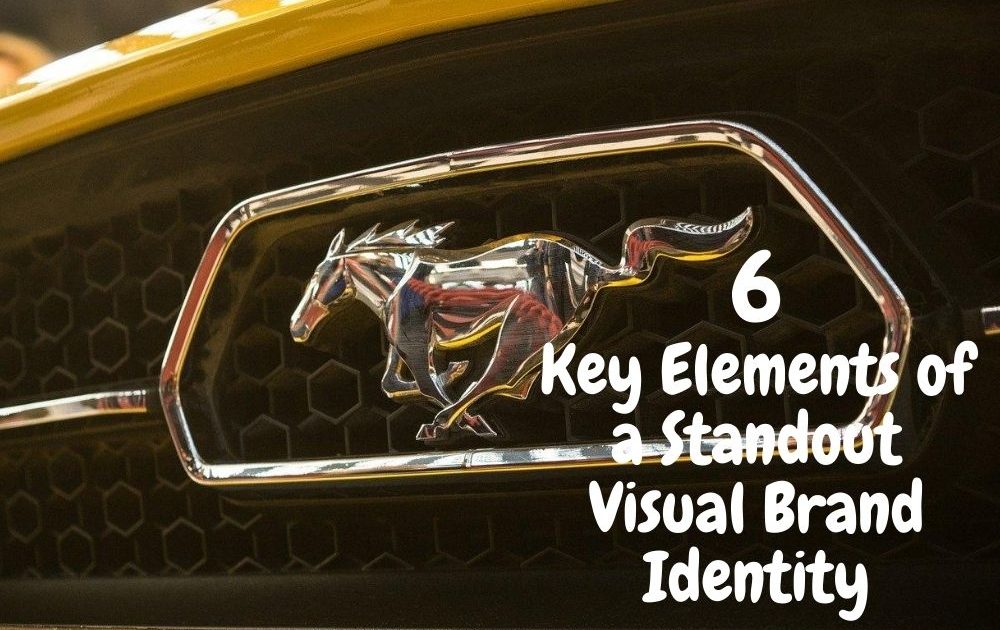In business, first impressions are crucial. Potential customers see your visual brand before anything else. Moreover, they need to be attracted to the image you convey so they feel connected to your company and would want to know more about what you offer.
Working on your visual brand identity, therefore, is important, particularly if you have a new business. You need to have one that stands out so you can attract your ideal customers, explain what your company is about, and show the value of your company.
If you are still working on the visual brand identity of your new business, focusing on the essential elements you need to incorporate in it will help you establish the right identity that will catch the attention of your target audience.
Including these elements in your official visual brand guidelines will ensure that you will be consistent with this marketing component, which is important for building your brand.
Components of an Effective Visual Brand Identity
Below are the six elements you have to incorporate in your visual brand identity:
1. Logo
Many new business owners start and end their visual branding identity with a logo. This is because most first-time entrepreneurs think a logo is the only brand element they need.
Your logo is the first visual element of your brand that people see. When designed correctly, it can convey company values and be an effective tool for marketing and branding campaigns. It can also help you connect emotionally with your target audience.
As such, it is important that you put careful thought into your logo design. It should be representative of your brand and catch the eye of anyone who looks at it.
You don’t have to go through the whole process of designing your logo alone. If you need help with this step, there are experts who can give you a hand so you can come up with the perfect one that looks professional and impressive at the same time.
2. Logo variations
Although you need to be consistent whenever you use your logo, sometimes, you need to modify or tweak it based on placement and usage. For instance, you may need to render it in black or white to use it for stationery.
Additionally, if your logo has a geometrically complex shape, you may want to have a circular or square variant so you can use it for your company’s social media profiles. When you have these variants ready, you won’t have to spend a lot of time cropping and modifying your logo to fit the avatars on these platforms.
When placing your logo in your website or software, you may be required to have a horizontal variation. You will do well to have a version of this, too, to avoid delays and difficulty with fixing the layout.
3. Color scheme
Your choice of colors also plays a crucial role in your visual branding identity. Colors can convey subliminal messages about your brand to your audience.
Moreover, colors can help your brand connect on an emotional level with your audience that can then influence their buying decisions.
Selecting the right colors can help you attract your ideal customers, too.
If you are not sure about the hues you should use, take a look at which ones your competitors are using. Also, take a few minutes to read about the psychology of colors since some can quickly convey the tone and emotion you want to express.
Once you have decided on your palette, enhance it by adjusting the color contrast. This element sometimes plays a more important role than the hues you select. It also has a direct influence on increasing conversion rates when used correctly.
4. Typography
The typeface you select for your wordmark and printed and digital marketing materials are also key elements of your visual brand identity. You, therefore, need to put some thought into choosing the right ones.
Select a few fonts for your official corporate typography. You can choose the ones from your logo design and their typeface family to maintain consistency.
But if the typeface on your logo seems too elaborate for use in letters or proposals, look for complementary fonts that you can use for your marketing materials. This will help you establish a cohesive brand identity.
List down these specific fonts on your official brand style guide. Additionally, make sure your chosen typefaces are available on both Mac and Windows computers.
Keep in mind that some fonts are not available in these operating systems. Your employees need to have access to them so that all proposals, presentations, and other marketing materials are branded similarly.
When you work with a third-party designer or marketing firm, make sure they know and use only your corporate typefaces, as well.
5. Images
Photos are also indispensable parts of your visual brand identity. For instance, if you want your audience to know that you are market experts, your website, social media channels, and marketing materials should contain appropriate photos that are professional looking.
If you have a travel and immigration website, it should have plenty of images indicating the countries you cater to.
Although you also have to be consistent with your images, it doesn’t mean you should use the same ones repeatedly. However, ensure they have a uniform or similar feel and look that complement the tone of the other visual elements.
When choosing your image sources, think carefully about your options. Stock photos are easy to access, inexpensive, and sometimes even free. However, if you use these frequently, you run the risk of using the same ones your competitors have on their website, social media channels, and other materials.
Building a library of photos you have taken or were shot by a professional is often a smarter option and handy one, especially if you are still establishing your visual brand identity.
6. Graphic elements
Small visual details can also help you build a powerful visual brand identity. These include the use of color blocks, backgrounds, banners, and shadows.
If you want to have graphic elements that work for and not against your brand, consider working with a professional.
By working with a graphic designer, your additional visual elements will have a cohesive look that strengthens your brand and messages. He or she can also create a style guide and library that will give your label a distinct look.
Building your visual brand identity and your brand requires careful planning and creativity. Incorporating these six key elements can give you a good start. However, be prepared to invest time and money into the whole process to stand out and remain competitive.
Banner Image by Miomir Djurovic from Pixabay




